Welcome to our blog post on Dragonfly Animal: History, Facts, Size, Habitat, and Classification! Today, we will explore the fascinating world of dragonflies, one of nature’s most incredible creatures. Dragonflies have been around for millions of years and have captured the attention of people worldwide. So, let’s dive in and learn more about these incredible animals.
Dragonflies are insects that belong to the order Odonata, which means “toothed ones” in Greek. They have a long and intriguing history that dates back more than 300 million years. Throughout their existence, dragonflies have remained mostly unchanged, making them ancient survivors. These animals have captivated humans with their dazzling colors, swift flight, and delicate wings.
Size-wise, dragonflies come in a range of dimensions, but on average, they have a body length of about 1 to 4 inches and a wingspan of around 2 to 5 inches. Despite their fragile appearance, dragonflies are agile hunters. They have fascinating hunting techniques, capturing their prey mid-air with exceptional precision. Their large compound eyes give them a 360-degree field of vision, allowing them to spot prey and threats effortlessly.
Dragonflies can be found across the world, thriving in various habitats. These versatile creatures inhabit areas near water bodies like ponds, lakes, and wetlands. This preference for aquatic environments is because they begin their lives in water as nymphs before undergoing a remarkable transformation into the beautiful winged creatures we know. Dragonflies are excellent indicators of a healthy ecosystem, as they are sensitive to changes in water quality and habitat.
The Dragonfly Animal is a captivating creature with a rich history dating back millions of years. These insects, with their dazzling colors, swift flight, and delicate wings, have been marvels of the natural world. Ranging in size from 1 to 4 inches, these agile hunters possess impeccable vision, enabling them to capture prey with precision and ease. By identifying their preferred habitat near water bodies, we can appreciate the valuable role they play in indicating the health of our ecosystems. Stay tuned as we delve deeper into the world of dragonflies in our upcoming articles!
History of Dragonfly
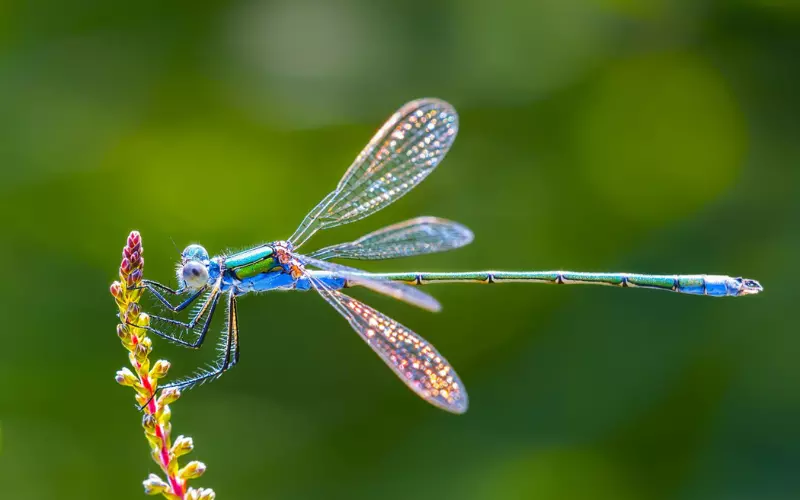
Dragonflies are fascinating creatures that have been around for millions of years. Their history dates back to the prehistoric era when dinosaurs roamed the Earth. Fossil records suggest that dragonflies first appeared about 300 million years ago, making them one of the oldest insect species on the planet.
During the time of the dinosaurs, dragonflies were enormous, with wingspans reaching up to two feet long. They inhabited lush forests and heavily populated areas near bodies of water, such as ponds and swamps. These ancient dragonflies relied on their strong wings to fly and hunt for smaller insects, which they caught with their sharp jaws.
As the world evolved, dragonflies also underwent some changes. Over time, their size decreased, and they adapted to different habitats. Today, dragonflies can be found all around the world, except in extremely cold regions like Antarctica. They prefer to live near water sources, such as lakes, rivers, and wetlands, as they use these areas to breed and lay their eggs.
Dragonflies are known for their distinct appearance and unique flying abilities. With their long, slender bodies and big, multifaceted eyes, they are easily distinguishable from other insects. They possess four transparent wings that allow them to maneuver swiftly through the air, making sudden turns and hovering in place. This aerial agility makes them skilled hunters, as they can catch their prey mid-flight.
Dragonflies have a long and fascinating history dating back to the time of dinosaurs. These ancient insects have evolved over millions of years, adapting to changing environments and becoming smaller in size. They can now be found all over the world, relying on their extraordinary flying abilities to hunt for food. Dragonflies continue to be a symbol of resilience and adaptability in the animal kingdom.
Importance of Dragonfly
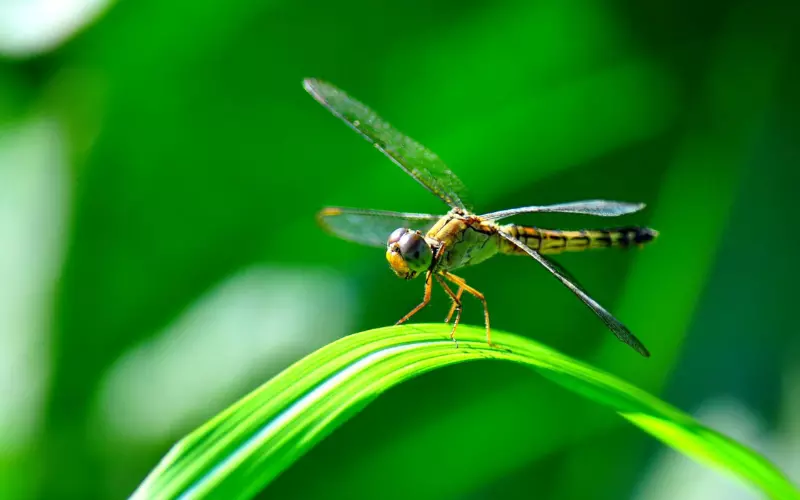
Dragonflies are fascinating insects that play a crucial role in maintaining the balance of nature. They are important for various reasons. Firstly, dragonflies are excellent hunters and help control the population of other harmful insects. They feed on mosquitoes, flies, and gnats, which are known to spread diseases. By preying on these insects, dragonflies help reduce their numbers and prevent the spread of diseases like malaria and dengue fever.
Secondly, dragonflies are indicators of a healthy ecosystem. As they live in or near freshwater bodies, their presence indicates the quality of water. Dragonfly larvae are particularly sensitive to pollution, so their presence in an area signifies clean and unpolluted water. By monitoring dragonfly populations, scientists can detect pollution levels and take necessary measures to protect and restore the ecosystem.
Lastly, dragonflies also contribute to the process of pollination. When they visit flowers in search of nectar, they accidentally transfer pollen from one flower to another. This helps in the fertilization process, allowing plants to produce seeds and reproduce. Without dragonflies, some plants might have difficulty reproducing, and this could disrupt the overall balance of the ecosystem.
Dragonflies are important creatures due to their role in controlling harmful insects, indicating the health of ecosystems, and aiding in the process of pollination. Their presence not only benefits humans but also helps maintain the delicate balance of nature.
Amazing Facts About Dragonfly’s
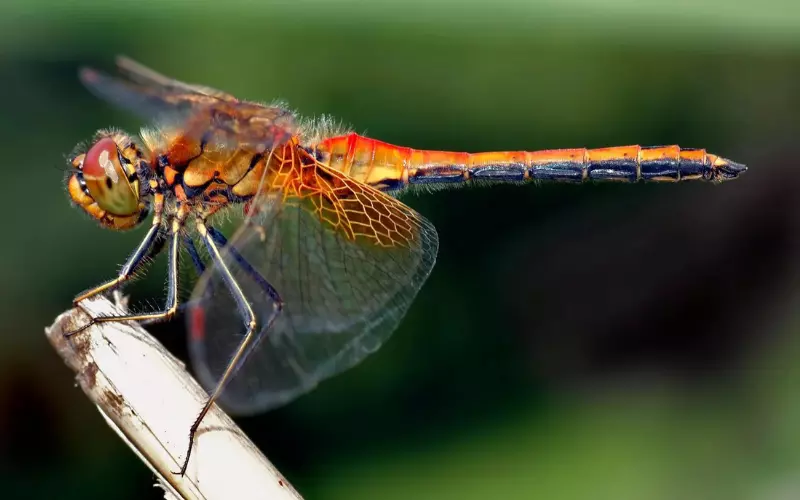
1. Dragonflies are insects that belong to the order Odonata and have been around for more than 300 million years.
2. They are found all over the world, except in extreme environments like deserts and polar regions.
3. Dragonflies have long, slender bodies with two pairs of transparent wings, which they can move independently.
4. These insects have large compound eyes, which provide them with excellent vision and the ability to detect movement from far away.
5. Dragonflies can range in size from as small as 0.3 inches to as large as 5.5 inches, depending on the species.
6. They are known for their beautiful and vibrant colors, which can include shades of blue, green, red, and yellow.
7. Dragonflies are strong and agile fliers, capable of reaching speeds up to 30 miles per hour.
8. Unlike many other insects, dragonflies can fly backward and hover in mid-air.
9. They have a short lifespan, typically living for only a few months to a year, depending on the species.
10. Dragonflies are carnivorous predators, feeding on a diet of smaller insects like mosquitoes, flies, and butterflies.
11. They catch their prey while in flight, using their strong jaws to capture and consume it.
12. Dragonflies also play an important role in controlling insect populations, making them beneficial to ecosystems.
13. Female dragonflies lay their eggs in or near water, as their larvae are aquatic and develop underwater.
14. Dragonfly larvae, also known as nymphs, have a unique adaptation called gills, which allows them to breathe underwater.
15. After some time, the nymphs emerge from the water and transform into adult dragonflies, completing their life cycle.
Can we keep Dragonfly as our Pet?
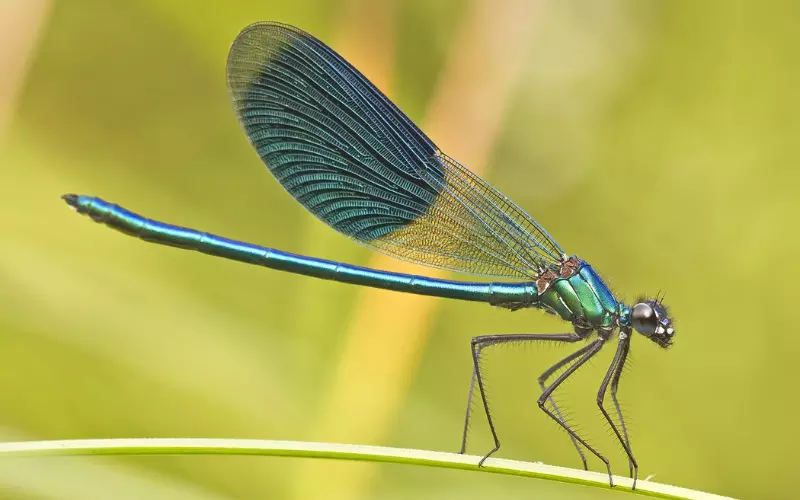
Dragonflies are fascinating and beautiful insects that can be found in many parts of the world. While it may seem tempting to keep a dragonfly as a pet, it is generally not recommended. Dragonflies are wild creatures that are best left in their natural habitats.
Keeping a dragonfly as a pet can be challenging and may not be suitable for a home environment. Dragonflies have specific needs and requirements that might be difficult to meet in captivity. They require a large space to fly and hunt for food, which can be difficult to provide in a typical home setting. Additionally, dragonflies have complex life cycles and may not adapt well to life in captivity.
Moreover, dragonflies play important roles in the ecosystem. They are natural predators of mosquitoes and other insects, helping to control their population. By keeping dragonflies as pets, we disrupt the delicate balance of nature and can potentially harm the environment. It is better to appreciate dragonflies from a distance and allow them to carry out their important ecological functions.
While dragonflies are captivating creatures, it is best not to keep them as pets. They have specific needs that can be challenging to meet in captivity, and they play an important role in the ecosystem. Instead, it is better to observe and appreciate dragonflies in their natural habitats, ensuring their well-being and preserving the balance of nature.
Size of Dragonfly’s
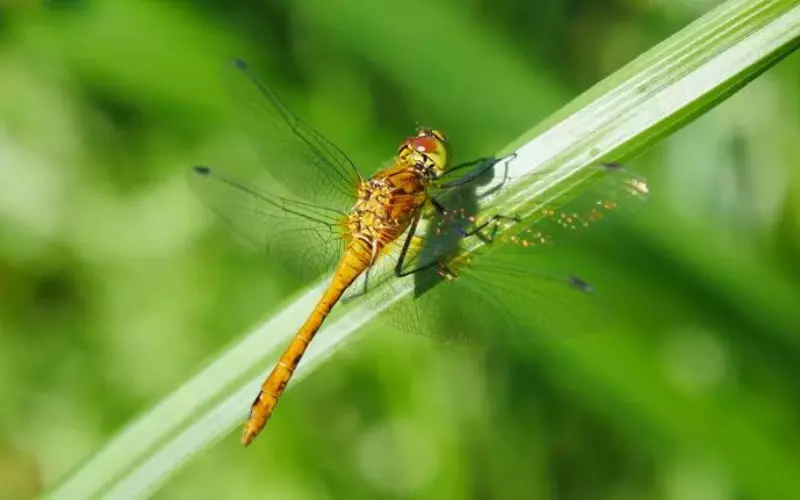
The dragonfly is a small creature that can be found all around the world. It is quite tiny, with an average body length of only about 2 to 3 inches long. For comparison, that’s about the length of your pinky finger! However, it’s important to note that some dragonfly species can grow a bit larger, reaching lengths of up to 5 or 6 inches.
Despite their small size, dragonflies have an impressive wingspan. Their fragile wings can measure anywhere from 2 to 5 inches wide. Imagine spreading your arms as far apart as you can; that’s how wide some dragonfly wings can be! These long wings allow them to fly quickly and gracefully through the air.
What makes dragonflies even more fascinating is their slender body shape. These insects have a thin body with multiple segments, giving them a distinctive appearance. They have six legs and two large compound eyes, which help them see and catch prey while flying. Their body is usually very colorful, with patterns and markings that may vary depending on the species.
Dragonflies may be small, but they are incredible insects with amazing abilities. Their size allows them to move swiftly through the air, and their delicate wings help them maneuver with ease. So next time you see a dragonfly hovering around, take a moment to appreciate its small yet mighty presence in the natural world.
Habitat of Dragonfly
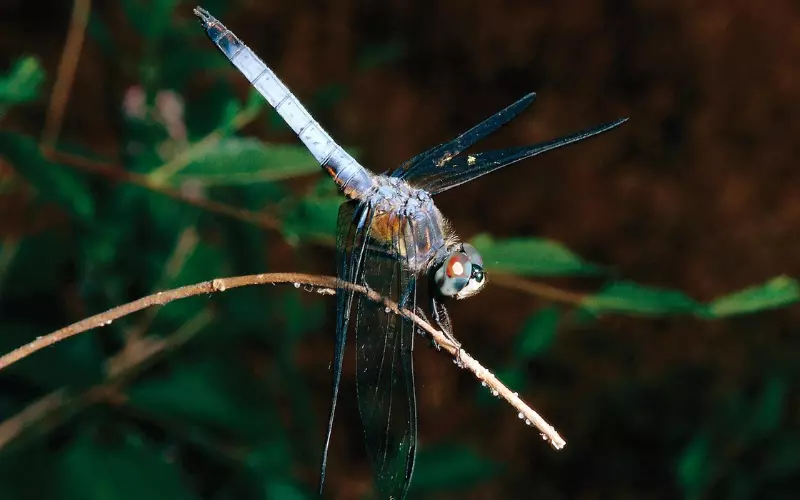
Dragonflies are fascinating creatures that live in various habitats all around the world. They can be found near ponds, lakes, rivers, and even in wetlands. These habitats provide the ideal conditions for dragonflies to thrive and carry out their life cycle.
In these aquatic environments, dragonflies have access to water, which is essential for their survival. They lay their eggs in or near water, usually on floating leaves or submerged plants. When the eggs hatch, the larvae, also known as nymphs, spend their early stages of life underwater. They feed on tiny insects, such as mosquito larvae and other aquatic organisms. It is fascinating to think about how dragonflies start their life underwater before transforming into their beautiful flying form.
As the nymphs grow, they molt several times, shedding their old exoskeleton to make space for their increasing size. Once they reach adulthood, they emerge from the water, climb onto a nearby plant, and undergo their final molt. This transformation is remarkable, as the dull-colored nymphs change into vibrant and iridescent adult dragonflies. Their wings become fully developed, enabling them to fly and hunt for prey.
Dragonflies are highly beneficial insects as they help control the population of mosquitoes and other insects, making them valuable predators in their respective habitats. The abundance of water and vegetation in their habitats ensures a steady food supply, allowing dragonflies to flourish and contribute to the overall balance of the ecosystem.
Dragonflies prefer to live in habitats near water, such as ponds, lakes, rivers, and wetlands. These environments provide the necessary resources and conditions for their life cycle, from egg-laying to nymph development and, finally, the emergence of adult dragonflies. Their presence in these habitats helps keep insect populations in check, making them vital contributors to the natural balance of the ecosystem.
Classification of Dragonfly’s
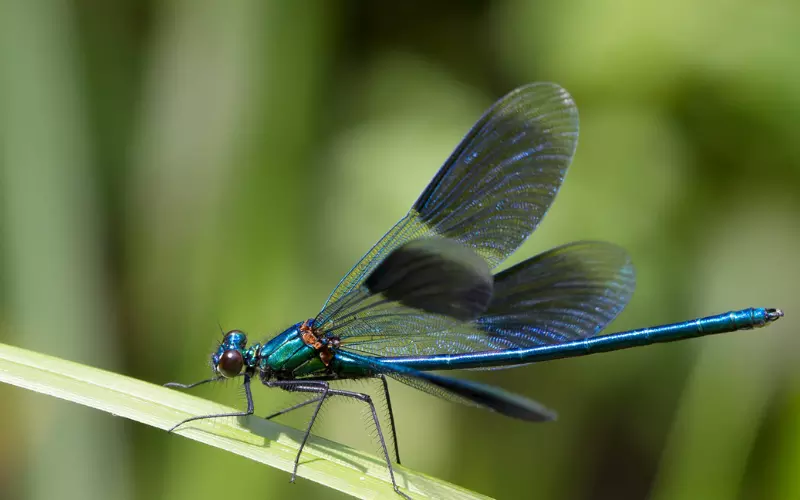
Dragonflies are fascinating insects that belong to the animal kingdom. They have a unique classification that helps scientists understand more about them. The classification of dragonflies is based on their characteristics and relationships to other living creatures.
Dragonflies are part of the phylum Arthropoda, which includes creatures with segmented bodies and jointed limbs. They are specifically classified in the class Insecta, as they have three main body parts (head, thorax, and abdomen), six legs, and two pairs of wings. These distinctive features separate them from other arthropods like spiders or crustaceans.
Further classification reveals that dragonflies belong to the order Odonata. This order includes dragonflies and damselflies, which are similar but have some distinguishing traits. Dragonflies usually have larger bodies and hold their wings at a right angle to their body when at rest. On the other hand, damselflies have slender bodies and hold their wings parallel to their body when they are not flying.
Dragonflies are divided into multiple families, each with unique characteristics. For example, the family Libellulidae is known for its strong and swift fliers, while the family Aeshnidae includes species that are excellent hunters. These families are further divided into genera and species to identify and study different dragonfly types accurately.
Understanding the classification of dragonflies helps scientists and nature enthusiasts appreciate their diversity and behavior. By examining their features and relationships, researchers can gather valuable information about these incredible insects and their role in ecosystems. Learning about the classification of dragonflies can be an exciting way to explore the natural world and appreciate the incredible variety of living creatures that share our planet.
Different Types of Dragonfly
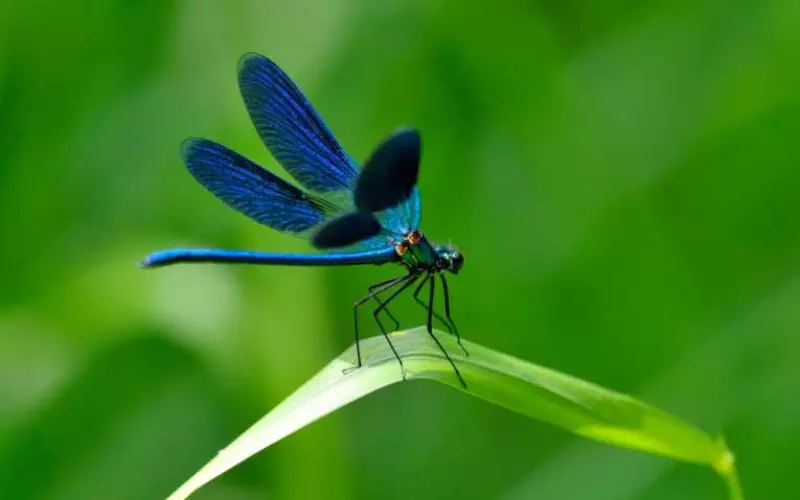
1. Common Green Darner (Anax junius): The Common Green Darner is one of the most widespread dragonflies in North America. It has a bright green thorax and can be seen near water bodies like ponds and lakes. It is known for its long-distance migration.
2. Eastern Pondhawk (Erythemis simplicicollis): This dragonfly is commonly found near ponds and marshes across eastern North America. The male has a bright green body, while the female’s body can be green or blue. They are important predators, helping control mosquito populations.
3. Blue Dasher (Pachydiplax longipennis): Blue Dashers are small dragonflies with a blue body and clear wings. They can be found near open areas with water, such as wetlands or slow-moving streams. They are known for their agility and quick movements during flight.
4. Twelve-spotted Skimmer (Libellula pulchella): As the name suggests, this dragonfly species has twelve dark spots on its wings. Found across North America, they inhabit slow-moving waters and are easily recognized by their striking wing patterns and dark brown metallic body.
5. Widow Skimmer (Libellula luctuosa): Widow Skimmers are medium-sized dragonflies with a distinct black and yellow abdomen pattern. They can be seen near ponds, lakes, and slow streams. Males develop a powdery blue luminescence on their abdomen as they mature.
6. Halloween Pennant (Celithemis eponina): This dragonfly species is known for its vibrant orange and brown colors, resembling the colors seen on Halloween. They prefer open areas near ponds or marshes and are active during the warm months of the year.
7. Flame Skimmer (Libellula saturata): Flame Skimmers are native to western North America and are larger-sized dragonflies with a fiery orange-red thorax and abdomen. They inhabit desert areas near ponds or streams and are active during the hot summer months.
8. Ruby Meadowhawk (Sympetrum rubicundulum): Male Ruby Meadowhawks have a bright red coloration, while females can be either red or yellowish. They can be found near water bodies such as lakes, ponds, or streams. They are a common sight during the summer season.
9. Four-spotted Skimmer (Libellula quadrimaculata): This dragonfly species showcases four dark spots on its wings. They are found in North America and can be seen near freshwater habitats. They are strong fliers, adept at catching their insect prey while in mid-air.
10. Banded Pennant (Celithemis fasciata): Banded Pennants have distinct black bands on their wings, giving them their name. They can be found in open areas with freshwater, including ponds and slow-moving streams. They are known for perching on twigs or grasses, making them easy to spot.
Geographical Presence of Dragonfly
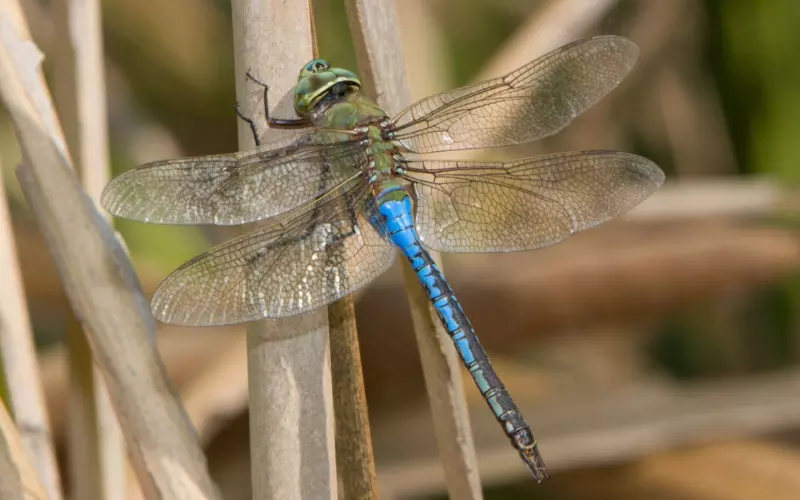
Dragonflies are found all around the world, in almost every region on the planet. These fascinating creatures can be seen in a variety of habitats, including freshwater lakes, ponds, rivers, and wetlands. They are most commonly found in warm and tropical regions, but some species can also survive in colder climates. With their shiny wings and bright colors, dragonflies bring a touch of beauty to the places where they dwell.
However, there are a few places where dragonflies are not found. They are generally not found in deserts, as these dry areas do not provide the necessary water sources for their survival. Similarly, dragonflies are not commonly seen in extremely cold regions, such as the polar areas, where the temperatures are too low for them to survive. These unique insects thrive in environments that offer suitable breeding grounds and an abundance of insects for them to feed on.
Dragonflies are found in various regions worldwide, particularly in warm and tropical areas. They prefer habitats with freshwater sources and can be seen near lakes, ponds, and rivers. However, they are not found in deserts or extremely cold regions. Despite these limitations, dragonflies are resilient creatures that bring both beauty and grace to many parts of the world.
Diet of Dragonfly’s

The diet of a dragonfly consists mainly of other insects. Dragonflies are excellent hunters and rely on their sharp eyesight to spot prey. They are known to eat mosquitoes, flies, bees, and even smaller dragonflies. These insects are a vital part of the dragonfly’s diet, providing them with the energy they need to survive and thrive.
Dragonflies are skilled hunters and can catch their prey while flying. They have a long and slender body that helps them maneuver through the air quickly. Dragonflies also have strong jaws that allow them to catch and eat their prey. Once they catch an insect, they use their sharp mouthparts to break it down into smaller pieces before swallowing it.
The diet of a dragonfly helps maintain the balance in nature. By feeding on insects, dragonflies help control their population. For example, dragonflies eat mosquitoes, which are known to spread diseases like malaria. By reducing the number of mosquitoes, dragonflies play an essential role in keeping these diseases under control.
The diet of a dragonfly primarily consists of insects such as mosquitoes, flies, bees, and smaller dragonflies. Dragonflies are skilled hunters and rely on their keen eyesight and flying abilities to catch their prey. By feeding on insects, dragonflies help control their populations, which is important for maintaining a balanced ecosystem.
Locomotion of Dragonfly

Dragonflies are fascinating creatures that can fly very swiftly. Their locomotion is truly remarkable! When a dragonfly takes off, it uses its powerful wings to push itself into the air. These wings, which are incredibly thin and transparent, beat rapidly, helping the dragonfly to lift its body and fly smoothly.
Not only can dragonflies fly forward, but they can also hover and even fly backward! They are experts at maneuvering in the air, thanks to their wings, which move independently. This allows them to change the direction of their flight quickly and easily. Dragonflies can also fly at incredible speeds, reaching up to 36 miles per hour, making them one of the fastest insects in the world!
Dragonflies have an amazing ability to fly. With their thin, transparent wings, they can take off, hover, fly backward, and reach incredible speeds. They truly are masters of the air!
Social and Sexual Behaviour of Dragonfly’s
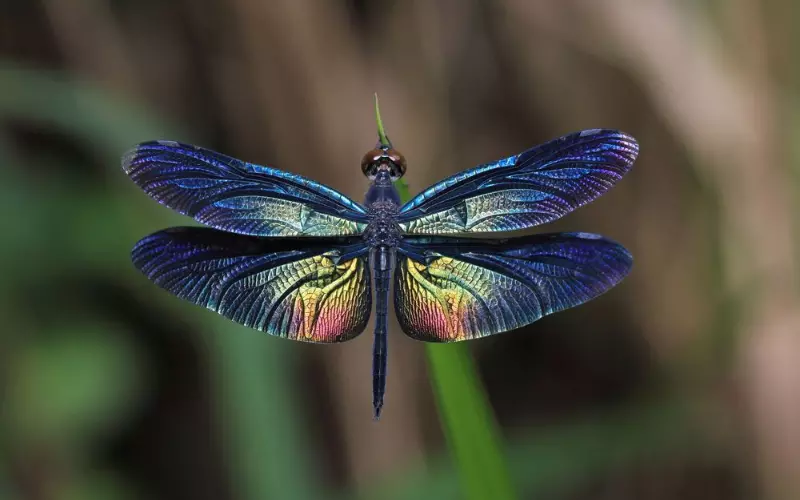
Dragonflies are fascinating creatures known for their unique social and sexual behavior. These amazing insects engage in various behaviors to communicate and find mates.
Firstly, dragonflies are highly social insects that often form large groups called swarms. These swarms consist of both males and females and serve as an opportunity for individuals to engage in courtship displays and search for potential mates. During these displays, male dragonflies showcase their flying skills, agility, and vibrant colors to attract female attention. The females carefully observe these displays and select the most impressive and suitable partner for mating.
Secondly, when it comes to sexual behavior, dragonflies show a peculiar method called the “wheel position.” After the male successfully attracts a female, they form a mating wheel. This occurs when the male clasps onto the female’s back with his tail, creating a heart-shaped formation. Once connected, the male transfers his sperm into the female’s reproductive system, enabling fertilization. This process can last for a few seconds or even several minutes, depending on the species.
Dragonflies exhibit both interesting social and sexual behavior. They form large groups for courtship displays and selection of mates, while their mating involves a unique wheel position. These behaviors are part of the dragonfly’s incredible life cycle, allowing them to reproduce and ensure the survival of their species in their environment.
Reproduction and Lifecycle of Dragonfly’s

Dragonflies have a unique and fascinating life cycle. It begins with the female dragonfly laying her eggs in or near water sources like ponds, lakes, or rivers. She can lay hundreds of eggs at a time. The eggs hatch and tiny dragonfly nymphs emerge. These nymphs live in the water for an extended period, sometimes for several months or even years, depending on the species.
During this nymph stage, dragonflies undergo many molts. They shed their exoskeletons several times as they grow. These nymphs are excellent hunters. They have special mouthparts that they use to catch and eat other small insects, tadpoles, and even small fish. The nymphs breathe through gills located in their rectum, which enable them to extract oxygen from the water.
After the nymph stage, the dragonfly nymph goes through its final molt and transforms into an adult dragonfly. This magnificent transformation is called metamorphosis. The adult dragonfly has a beautiful and colorful pair of wings, a long and slender body, and large eyes. These wings allow it to fly swiftly, and their compound eyes enable them to have an exceptional vision, perfect for hunting prey on the go.
Adult dragonflies stay in the air during much of their lives, which can range from a few weeks to a few months. They mate while flying, and the female then lays her eggs, starting the cycle all over again. Dragonflies play an essential role in our ecosystem as both predators and pollinators. They help keep the insect population in check and aid in the pollination of flowers. These fascinating creatures provide us with a beautiful example of nature’s resilience and the wonders of the animal kingdom.
Threats to Dragonfly’s
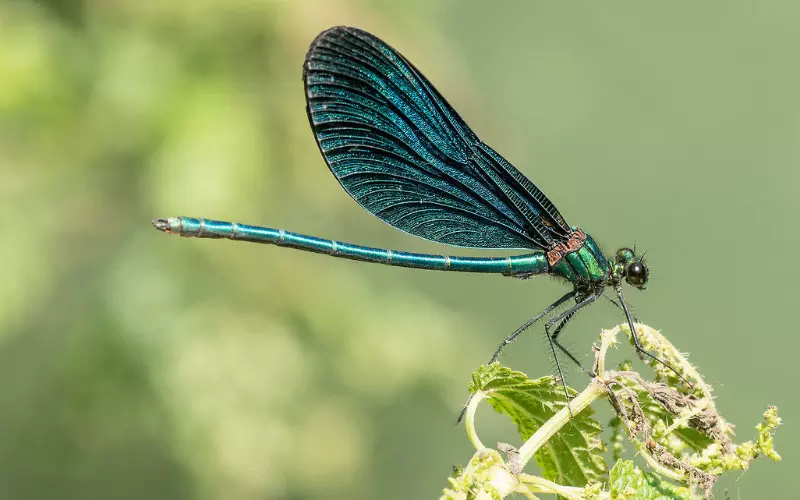
Dragonflies, just like any other living creatures, face many threats that can harm their population. One of the main threats to dragonflies is habitat loss. As humans expand their cities and farms, they often destroy the habitats that dragonflies need to survive and reproduce. Ponds, rivers, and wetlands where dragonflies lay their eggs are being filled in or polluted, leaving these beautiful insects without a suitable place to live.
Another threat to dragonflies is pollution. Chemicals and pollutants from factories and farms can seep into the water where dragonflies live, causing harm to their fragile bodies. When dragonflies consume polluted water, they can become sick and sometimes even die. Likewise, pollution can also reduce their food sources, such as small insects and larvae, leading to a decline in dragonfly populations.
Climate change poses yet another threat to these amazing creatures. As temperatures rise and weather patterns change, it can disrupt the life cycles of dragonflies. They rely on specific weather conditions for breeding, feeding, and migrating. However, with climate change, their habitats may become too dry or unpredictable, making it difficult for dragonflies to survive and reproduce.
Dragonflies face multiple threats that jeopardize their existence. Habitat loss, pollution, and climate change all contribute to the decline in dragonfly populations. To protect these fascinating insects, we must take action and work towards preserving their habitats, reducing pollution, and addressing climate change. Our actions today can make a big difference in ensuring the survival of dragonflies and maintaining the balance of our ecosystems.
Conclusion
Dragonflies are fascinating creatures found all over the world. They have a long history, dating back millions of years. These beautiful insects are known for their vibrant colors and unique flying abilities. Let’s take a closer look at some interesting facts about dragonflies.
Dragonflies come in various shapes and sizes. They can range from about half an inch to five inches long. Despite their small size, they have excellent eyesight and can see in all directions. Dragonflies also have strong wings that enable them to fly swiftly and even hover in one place.
These creatures prefer to live near water bodies such as lakes, ponds, and streams. They lay their eggs in water, and when these eggs hatch, the nymphs live underwater until they mature into adult dragonflies. These insects are known for their voracious appetite, as they feed on mosquitoes, flies, and other small insects. This makes them a beneficial part of the ecosystem, helping control the population of these pests.
Dragonflies are fascinating animals that have been around for millions of years. From their unique flying abilities to their vibrant colors, they never fail to capture our attention. Found near water bodies, they play a crucial role in maintaining the balance of nature by controlling insect populations. So, next time you see a dragonfly, take a moment to appreciate these beautiful creatures and their important role in the animal kingdom.
Frequently Asked Questions about Dragonfly’s (FAQ’s)
What is a dragonfly?
A dragonfly is an insect belonging to the order Odonata.
How big do dragonflies grow?
Dragonflies can vary in size, with the smallest species measuring about 0.8 inches (2 cm) and the largest species reaching up to 6 inches (15 cm) in length.
Where are dragonflies commonly found?
Dragonflies are found almost everywhere in the world, excluding Antarctica.
What do dragonflies eat?
Dragonflies are predatory insects that primarily feed on other insects, such as mosquitoes, flies, and ants.
How long do dragonflies live?
The lifespan of a dragonfly can vary depending on the species, but most adults live for several weeks to a few months.
Do dragonflies bite humans?
Dragonflies do not commonly bite humans, as they primarily feed on other insects. However, some larger species may nip if they feel threatened.
Can dragonflies swim?
Dragonflies are excellent fliers, but they are not strong swimmers. They can land on water surfaces but do not swim like aquatic insects.
Do dragonflies migrate?
Certain species of dragonflies undertake seasonal migrations, but not all of them do. The patterns and distances of migration can vary among species.
Can dragonflies change colors?
Dragonflies are known for their distinctive colors, which come from structural coloration rather than pigmentation. They can appear in different colors depending on the angle of light.
How do dragonflies reproduce?
Dragonflies engage in a process known as mating in the air, where the male grasps the female using appendages at the end of his abdomen, forming the “wheel” position.
Can dragonflies walk?
Dragonflies have six legs and can use them to walk, though their legs are mainly used for grasping prey in flight.
What is the purpose of the big eyes in dragonflies?
The large compound eyes of dragonflies allow them to have nearly 360-degree vision, aiding them in hunting and avoiding predators.
Are dragonflies beneficial to the ecosystem?
Yes, dragonflies are considered beneficial insects as they help control populations of mosquitoes, flies, and other pests.
How fast can dragonflies fly?
Dragonflies are incredibly agile and can fly at impressive speeds, with some species reaching speeds of up to 30 miles per hour (48 kilometers per hour).
Do dragonflies sleep?
While dragonflies do not sleep in the same way humans do, they do undergo periods of rest where they become less active. They may perch on plants or rocks during these resting periods.

Hi there! I’m Morgan Gutierrez, and I love animals! I work as a Seasonal Animal Care Specialist at Brookfield Zoo and also teach people about animals, which is super fun. I studied at Valparaiso University in Lockport, Illinois, where I learned even more about these amazing creatures.
I’m not just about taking care of animals; I write articles about them, too! I explore and share many interesting animal stories, from cute kittens to giant elephants.
In the past, I’ve worked with veterinarians, helped with research, and even been an Animal Ambassador, bringing animals closer to people. Animals are my passion, and I enjoy helping others learn about them. So, if you ever want to know about animals, feel free to ask. I’ll explain it in a way that’s easy to understand, just like talking to a friend!












